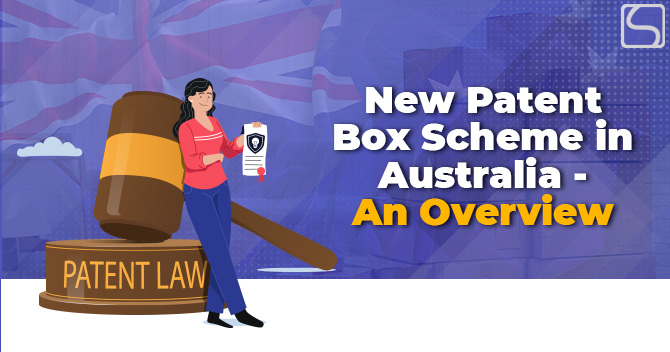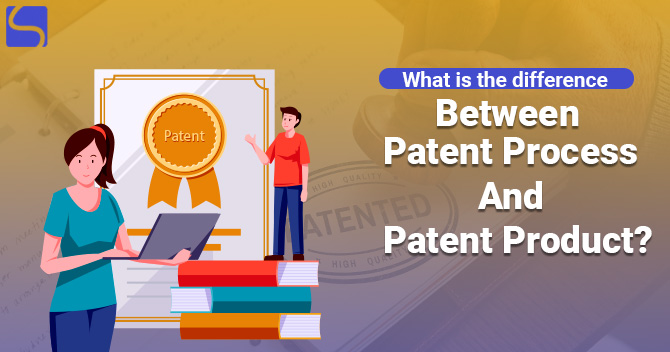New Patent Box Scheme in Australia – An Overview

Karan Singh | Updated: Mar 24, 2022 | Category: Patent
The Government of Australia is intending to introduce a Patent Box Scheme in Australia with the aim of promoting life sciences innovation across the region & incentivising investment in the sector in response to the Covid-19 pandemic. On May 11, 2021, the new beneficial tax scheme was introduced by the Federal Government of Australia in its Budget.
In this new scheme, income from certain medical technology & biotechnology Patents will benefit from a reduced cooperate tax rate of 17%, well below the standard corporate tax rate of 30%, although small & medium-sized companies can benefit from a reduced rate of 25%. It’s hoped that this lower tax rate will boost extra investment in biotechnology and medical technology sectors in Australia and promote the development or advancement of innovation with the region, rather than offshore. Scroll down to check more information regarding the Patent Box Scheme in Australia.
Table of Contents
What is a Patent Box?
Before we discuss the Patent Box Scheme in Australia, let’s understand the meaning of a Patent Box. A Patent Box is a tax scheme that provides a lower tax rate for some sort of income derived from certain forms of IP or Intellectual Property; typically, Patents but sometimes other forms of Intellectual Property like Copyright & Designs material. The policy objective of Patent Boxes is to encourage R&D and the commercialisation of Intellectual Property.
Details of the Patent Box Scheme in Australia
From July 2022, the new Patent Box Scheme in Australia will become operational exclusively for Patents in the medical technology or biotechnology sectors granted after May, 2021. The new Patent Box Scheme in Australia will only be available to Australian companies.
The Patent should be owned by an Australian Company and the income generated should be received by an Australian Company/an Australian permanent establishment of a foreign company. It will also be a requirement that R&D underpinning the Patent should have been carried out in Australia. The Federal Government has further said it would consult on whether the regime or scheme should be extended to cover Patents in the clean energy sector.
The detailed mechanics of how the new Patent Box Scheme in Australia will operate haven’t yet been confirmed, although the Government has shown that it will follow the guidelines of OECD or Organisation for Economic Cooperation & Development.
Given the global economic & health impacts of the Covid-19 pandemic, it’s predictable that the Government of India is prioritising health & life sciences innovation. However, the decision of the Federal Government to introduce a Patent Box to incentivise innovation was unexpected since earlier proposals to introduce a Patent box had been rejected.
The finding of an examination of identical Patent Box Regimes in Europe and the UK determined that a Patent Box Scheme would be questioned and ineffective its efficacy in encouraging innovation, as per a report published by the Government.
All manufacturing income from Patents is presently excluded from the scope of the proposed new Patent Box Scheme in Australia. This is disappointing and is likely to knowingly limit the benefits of the new regime to biotech businesses, the businesses the Federal Government is seeking to incentivise.
Benefits of a Patent Box Scheme
Following are the benefits of the Patent Box Scheme:
- By facilitating a concessional tax treatment, Patent boxes may encourage or promote firms to Patent inventions that would have otherwise been kept secret.
- Patents boxes could encourage or foster the commercialisation of research as the tax incentives are output based.
- Based upon the specific design of Patent boxes, they could lessen the erosion of the domestic tax base by promoting firms to commercialise Research & Activity which has occurred locally.
- Increased volume of Patents means increased revenues for the Patent Office and greater disclosure of technical knowledge.
Who will benefit from the new Patent Box Scheme in Australia?
The proposal has the capability to benefit the biotechnology & medical sector, which comprises pharmaceutical companies. It will be larger or bigger companies that derive the most benefit because MNEs or Multinational Enterprises tend to apply for & own more Patents than local SMEs.
Reason behind introducing a Patent Box Scheme by the Government
Research & Development activities are extensively perceived to have positive benefits that spill over to other parts of the economy & benefit the rest of society. As such, some Governments attempt to promote Research & Development activities via a combination of direct investment and tax incentives.
Presently, over 20 countries have some form of Patent or Intellectual Property box tax regime. While Patent Box Tax Schemes can differ extensively in their scope, they are mostly designed to achieve/accomplish some or all of the following objectives:
- Promote increased investment in Research & Development[1] activities;
- Prevent the erosion of the domestic tax base that can happen when mobile sources of income are transferred to other nations;
- Encourage increased investment in R&D activities.
The assumptions underlying the world have progressively sought to change their tax regimes to incentivise the acquisition & retention of Intellectual Property. This competition between nations has resulted in ever more extensive tax regimes that enable big MNCs to access low tax rates for Intellectual Property related income without contributing noteworthy amounts of Research & Development expenditures in the host country. The OECG considers this sort of competition to be a damaging tax practice. In other terms, Patent Box Tax Schemes can possibly give rise to risky tax practices/lead to a race to the bottom if they are designed/implemented poorly.
Conclusion
The Patent Box Scheme, as now proposed, will give a concessional corporate tax rate of 17% to a portion of income received from the exploitation of Australian, European, or US Patents granted after May, 2021 that are associated with therapeutic goods listed on the ARTG, where the income is attributable to the taxpayer’s technology development underlying that Patent in Australia.














